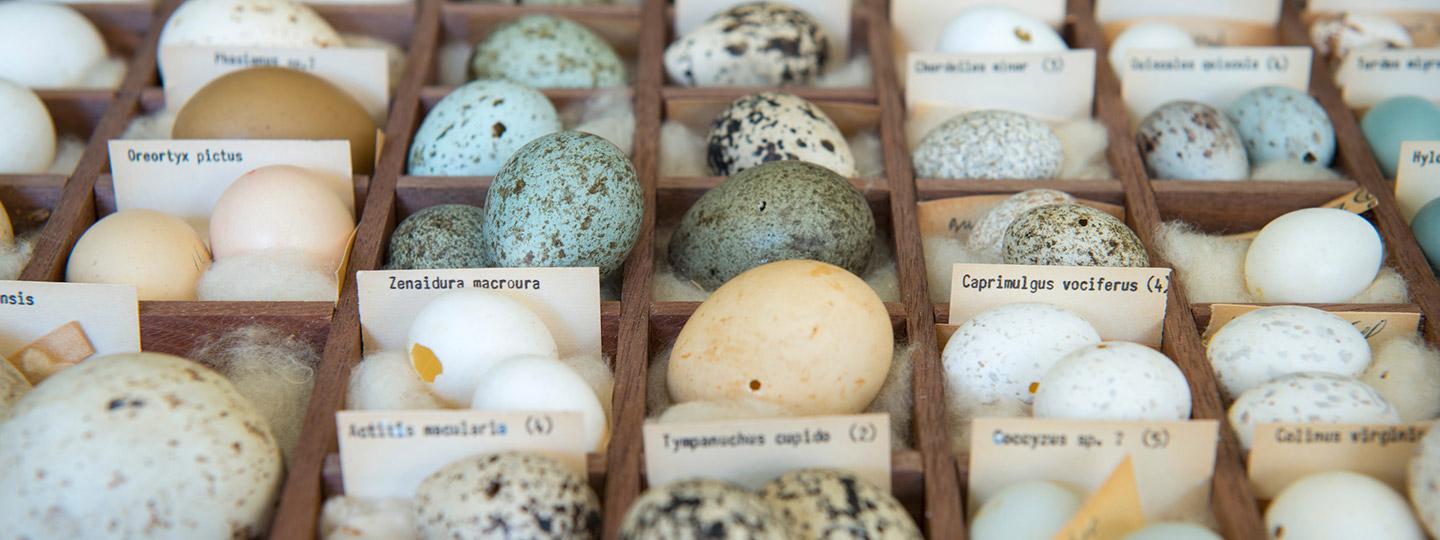Natural history collections are physical records of Earth’s biological heritage that help us name, understand, and ultimately protect biodiversity. Most of the specimens are old, but they continue to yield data informing pressing environmental problems through new technologies like ancient DNA analysis.
Our Collections
With 65,000 specimens, our collections are the centerpiece of our research program. Our holdings are digitized and fully searchable online through the Arctos portal (you can select our collection under the drop-down menu under Identifiers). Nearly all of our specimens are fully georeferenced with the aid of field notes to determine precise localities and error.
Collection Visits
Please make an appointment by e-mail. The collections are open to scientists, artists, and others for research purposes. With advance notice we can usually arrange visits during normal weekday business hours.
Specimen Loans
We can loan specimens by mail to qualified researchers at other museums or institutions that have the facilities to properly store loaned specimens. Although the loaned specimens are for the use of individual researchers, the loans themselves are made to the institution where they will be housed.
Loans are made for a period of one year, subject to renewal. Additional conditions are outlined on the Specimen Invoice accompanying each loan, which must be signed and returned upon receipt of the loan material.
We do not loan holotypes or other rare specimens. If a request is made for a loan of all of our specimens of a given taxon, we will make the loan in installments, with the second (and subsequent) installments sent upon successful return of previous installments.
We generally will not make specimen loans to institutions outside of the United States because of the complexities in permit and customs requirements.
Educational Tours
To arrange educational tours, please get in touch by e-mail.
Bird Collections
The vast majority of our collection (60,000 specimens) is whole bird study skins. With 50,000 of these from Mexico, we are the largest Mexican bird collection in the world. We also have over 6,000 birds from Ecuador and sizeable holdings from Honduras (2,200), Guatemala (1,200) and Costa Rica (1,200).
Hummingbirds are a particular taxonomic strength, with nearly 7,000 specimens representing 88% of all species. Our collection also contains a small but notable collection of 1,300 skeletons and 536 eggs sets with many nests.
Mammal Collections
Our mammal collection is small but important, with over 2,000 specimens including local Mexican endemics like the Volcano Rabbit (Romerolagus diazi) and the Omiltemi Cottontail (Sylvilagus insonus).
Archives
We have an archive of correspondences to and from Robert T. Moore and other ornithologists of his era, as well as vintage maps, field equipment, lantern slides, and field journals.
Ornithological Book Collection
The several thousand volumes of books in the Robert T. Moore collection, each with his signature bookplate, form a comprehensive catalog of professional ornithology in his era.
Donating Specimens
Did you find a dead bird in California? Uncover a trove of old study skins or taxidermy in your grandfather's attic? Get in touch to see if you can donate your specimens!


